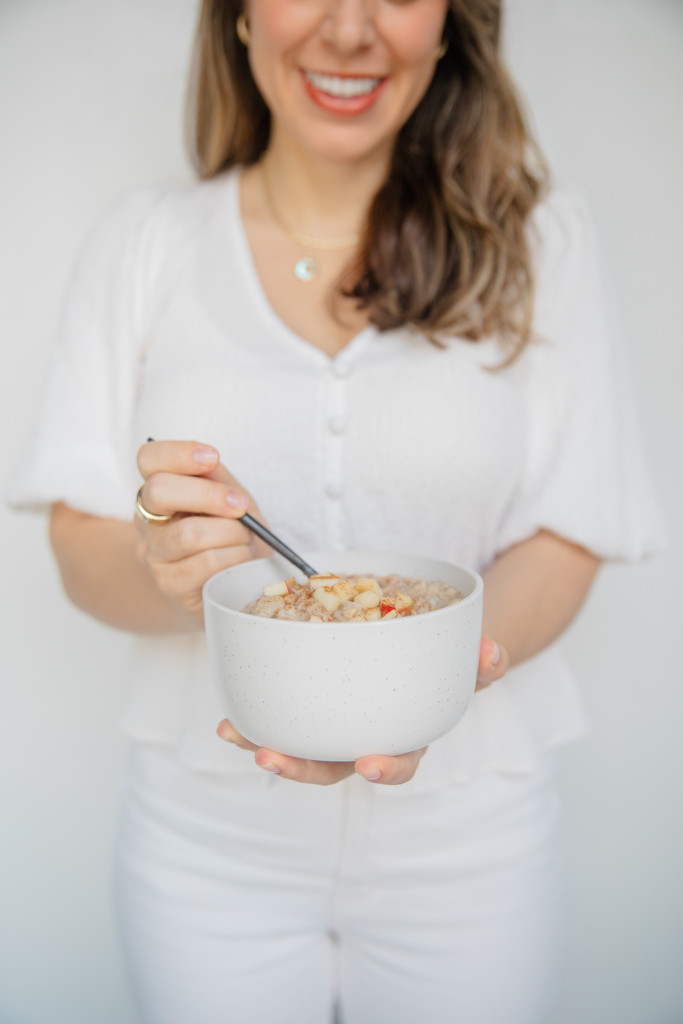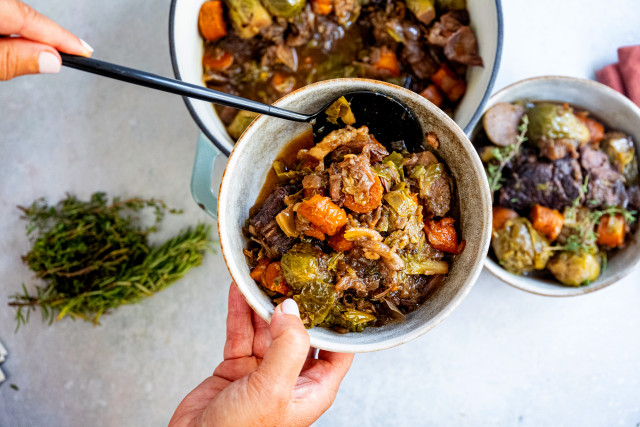
What is Cycle Syncing?
Cycle Syncing is a concept that was first introduced by functional nutritionist, Alissa Vitti in her 2014 book: Woman Code. The method encourages making movement and food choices that align to support phases of your menstrual cycle. That alignment is meant to promote optimal hormone balance and in turn, reduce premenstrual symptoms such as cramping, bloating, fatigue and mood shifts. It may also help to lower stress, regulate irregular cycles and potentially support fertility as well.
How Do Foods Impact Hormones?
While more research is needed to show the efficacy of this method, the concept does make sense. The foods we eat impact every cell of the body. They affect the microbiome and microbe balance as well as impact blood sugar and hormones. Foods impact hormones in a few different ways.
- Certain micronutrients - like B vitamins - work to keep different hormones in balance, so when there are deficiencies present, hormone levels are directly impacted.
- Regular consumption of higher glycemic foods - including white bread, snacky foods like chips, and sugary beverages - can dysregulate hormonal balance.
- Not consuming enough carbohydrates for a menstruating woman can also have a negative impact on hormones.
How Do Hormones Shift During the Menstrual Cycle?
In the first half of the menstrual cycle, there is typically less fluctuation in hormone levels. From the first day of a woman’s cycle to ovulation, generally we see fewer fluctuations in mood, as well as increased productivity and higher energy levels.
In the second half of the cycle, there are changes in energy and mood, as well as insulin sensitivity. As progesterone rises in the second half of the cycle, research has demonstrated there is a change in glycemic response to the same foods eaten in the first half of the menstrual cycle pointing to insulin sensitivity decreasing as women move through their cycle.
How To Cycle Sync.
Day 1-6: Menstrual Phase
During this phase, estrogen is at its lowest point. With shedding of the endometrial lining, the goal is to
- Focus on consuming iron-rich foods to help replace iron lost while menstruating.
- This include grass-fed ground meat, legumes and lentils, dark leafy green vegetables.
- Vitamin C increases iron absorption so incorporating foods rich in this nutrient - including berries, red peppers, and broccoli - is key to maximizing absorption of iron. This is especially the case for absorbing iron from veggies as their iron is less bioavailable than that in animal protein. A couple of good examples of this would be adding berries to your salad or lemon to your cooked greens.
- Omega-3 fatty acids are known to reduce inflammation and can help alleviate cramping. Increase consumption of salmon, walnuts and ground flaxseed to support increasing Omega-3s, aiming for 2-3 servings per week.
- Focus on restorative exercises such as yoga, Pilates, stretching, and walking.
Day 7-12: Follicular Phase
Estrogen levels rise during the Follicular Phase, which can increase insulin sensitivity and lower blood sugar levels. In this phase, the aim is to
- Eat more cruciferous vegetables - like broccoli, kale and arugula - to support appropriate excretion of estrogen through the gut. If there is a gut imbalance, it will impair the ability to excrete any environmental toxins that you’re exposed to and can create a buildup of estrogen.
- Energy levels increase which means it’s a great opportunity for cardio-based workouts like HITT, running, spinning, and to incorporate more strength training.
- Complex carbohydrates paired with protein will help fuel those higher-intensity workouts and support building lean muscle mass.
Day 13-15: Ovulatory Phase
Estrogen and testosterone levels peak as the ovaries release an egg. It is typically a time of high energy levels and stable mood. We want to support this phase with
- A focus on fiber-rich fruits and vegetables as those plant-based antioxidants and glutathione will help the liver metabolize estrogen and combat excess levels that can lead to hormonal acne and bloating.
- For movement, HITT, weight lifting and kickboxing can all be great during the phase of greater energy.
Day 16-28: Luteal Phase
Progesterone levels rise which can decrease insulin sensitivity and lead to higher blood sugar levels. Typically, energy levels decrease during the luteal phase. During this phase, the focus is on
- Consuming nutrient-dense, fiber-rich foods with a lower glycemic index. A goal is to provide adequate calories which will prevent energy dips as well as support blood sugar & regular bowel movements.
- Dark leafy greens are great during this phase because they are high in calcium and magnesium which can reduce water retention.
- Incorporate lighter workouts like Pilates, barre, yoga, body weight exercise.
Stress is just as much of a contributor to hormonal imbalance as nutrition. Incorporating more yoga, deep breathing, and meditation, as well as relaxing activities is a way to positively affect your hormones throughout your entire menstrual cycle


